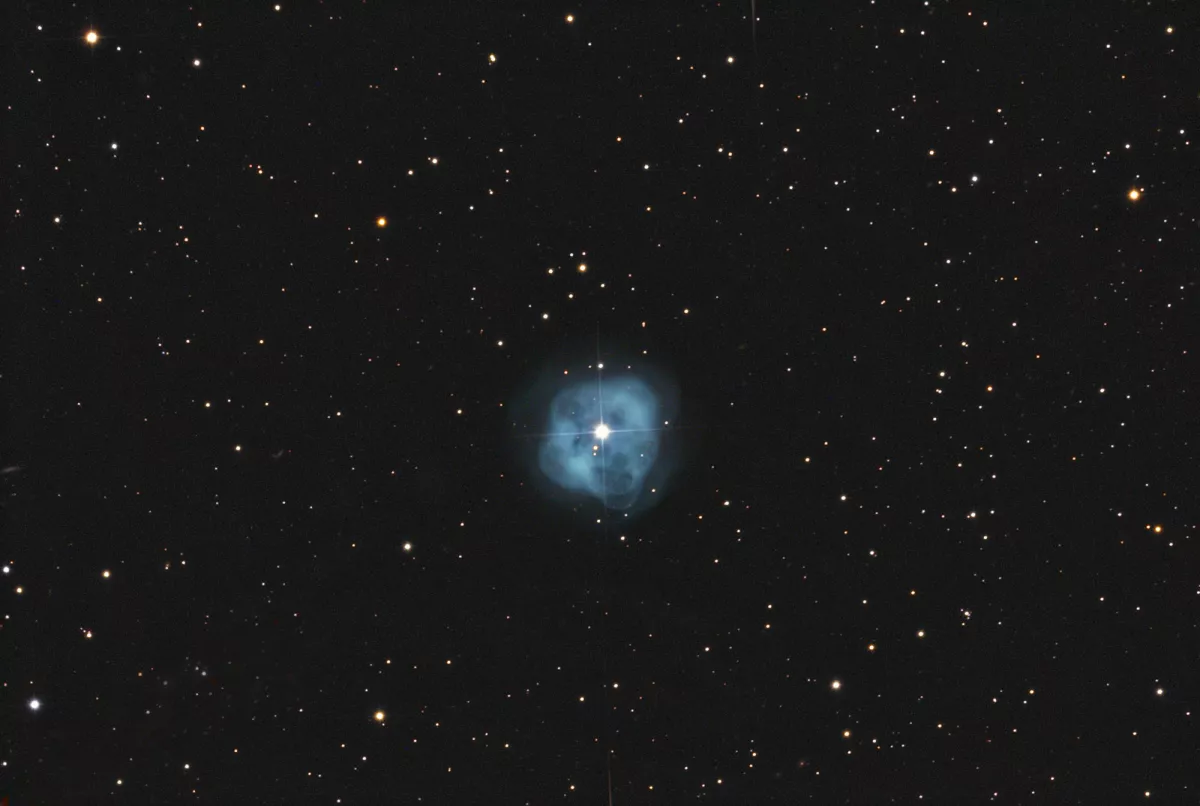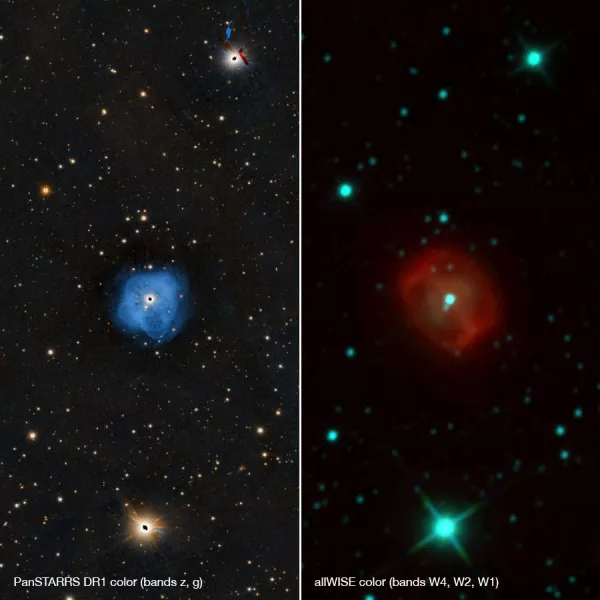Dew Nebula (NGC 1514)


History
The object was discovered by William Herschel on 13 November 1790 and cataloged as IV 69. It marked a turning point in his astronomical thinking, because until then astronomers believed that all nebulae were composed of faint single stars that could not be resolved with the devices of the time. Herschel described NGC 1514 as follows: «A most singular phenomenon; A star 8m with a faint luminous atmosphere of a circular form, about 3' in diameter. The star is perfectly in the centre, and the atmosphere is so diluted, faint and equal throughout, that there can be no surmise of its consisting of stars, nor can there be a doubt of the evident connection between the atmosphere and the star. Another star, not much less in brightness, an in the same field with the above, ws perfectly free from any such appearance.» [465]
Physical Properties

NGC 1514 is a 114 to 132 arc seconds sized planetary nebula 2000 light years away. It has an integrated visual brightness of 10.9 mag and a central star that is considerably bright at 9.4 mag. The nebula shines very strongly in the O-III range (doubly ionized oxygen), but also in the H-alpha and H-beta range (light of neutral hydrogen at 656.3 nm and 486.1 nm, respectively). In the O-III range, an expansion speed of the nebula of 25,000 m/s has been calculated, while the nebula as a whole including the central star is moving away from us at 60,000 m/s. The central star of NGC 1514 is particularly interesting. It is a very narrow double star that cannot be separated in telescopes. An A-star and an O-subdwarf star orbit their common center of gravity in just 9h 50m.
| Designations | PN G165.5-15.2: NGC 1514, PK 165-15.1, ARO 21, VV 17, VV' 23 |
| Right Ascension (J2000.0) | 04h 09m 17s |
| Declination (J2000.0) | +30° 46' 35" |
| Dimensions | 132." (optical), 160." (radio) |
| Distance | 0.66 kpc |
| Radial Velocity | +59.8 ± 4.4 km/s |
| Expansion Velocity | 25.0 (O-III) km/s |
| C-Star Designations | AG +30 402, AG82 28, BD +30 623, FB 33, FB 34, HD 281679, PLX 915, SAO 57020 |
| C-Star Magnitude | U: 9.87, B: 9.93, V: 9.42 |
| C-Star Spectral Type | sdO + A0 III |
| Discoverer | PICKERING 1879 |
Finder Chart
NGC 1514 is located in the constellation Taurus on the border with the constellation Perseus. If you extend the connection between the two stars ο - ζ Persei by about 1.5 times, the PN should already be visible in a large field eyepiece. If you don't know what kind of sight to expect at NGC 1514, the search for this PN can sometimes be quite lengthy, even though the nebula is in a familiar area of the sky. Without the O-III filter, the nebula around the bright central star looks as if the eyepiece were slightly fogged up. Hence it was nicknamed «Dew Nebula». If there is no O-III filter available, you should primarily look out for the distinctive star pattern in the 1° closeup. Of the three stars north/south direction, the middle central star is NGC 1514.

Visual Observation
400 mm Aperture: In the 21 mm Ethos and the 13 mm Ethos, the planetary nebula appears as a faint, structureless halo around the bright central star. The fact that the optics are not fogged indicates that only the middle star in the trio exhibits such a halo. With the O-III filter, the halo reveals itself as a large, round planetary nebula, though still lacking in structure. — 400 mm f/4.5 Taurus Dobsonian, Hasliberg, 16. 12. 2023, SQM 21.2, Bernd Nies